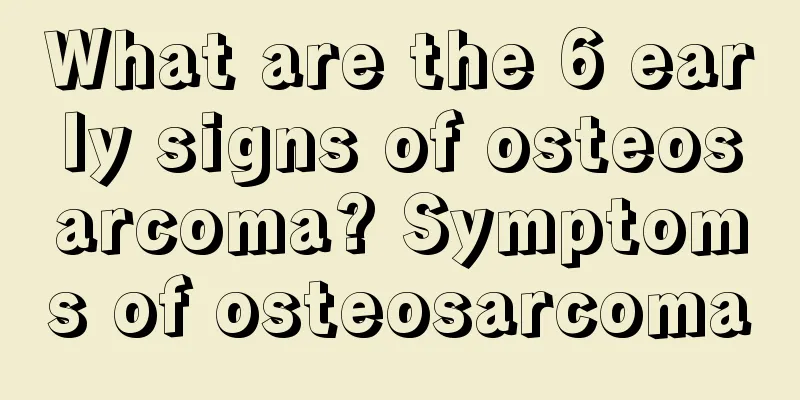Dermatology laser treatment

|
Laser is a medical method widely used in the field of medical cosmetology. In addition to the field of medical cosmetology, laser can also be used in other fields. In the field of medical cosmetology, lasers are mainly used to treat some skin diseases, such as removing moles and freckles. However, when using laser to treat skin diseases, you should also pay attention to the proper use of the laser. Because the damage caused by laser to the human body is permanent, what diseases in dermatology can be treated with laser? 1. Carbon dioxide laser (continuous) The wavelength is 10600nm and the power is 10-50W. It is mainly used clinically to remove superficial benign skin growths and tumors, such as common warts, condyloma acuminatum, seborrheic keratosis, pigmented nevus, skin tags, skin horns, keratoacanthoma, purulent granuloma, etc. It is sometimes also used to treat tumors such as Bowen's disease, basal cell carcinoma, and squamous cell carcinoma. 2. Helium-neon laser The wavelength is 632.8nm, and the output power is generally 10-40mW. It is commonly used clinically for: skin ulcers, alopecia areata, herpes zoster and its sequelae, folliculitis, etc. It should be noted that it cannot be used by people with photosensitivity diseases, malignant tumors, and acute infections. 3. Continuous (Nd:YAG) laser The wavelength is 632.8nm, the output power is 10~80W, and the wavelength of Nd:YAG laser output is in the near-infrared region, which mainly produces thermal effects in skin tissue, causing skin tissue to gasify, carbonize, and coagulate. It is commonly used clinically for: treating vascular proliferative lesions, such as cavernous hemangioma, lymphangioma, angiokeratoma, purulent granuloma, hemangioendothelioma, Kimura's disease, etc. It can also be used for the treatment of common warts and plantar warts. 4. Indium-doped gallium semiconductor laser The wavelength is 980nm and the power is 10-30W. It is commonly used clinically to treat vascular proliferative skin diseases such as cavernous hemangioma, lymphangioma, angiokeratoma, purulent granuloma, hemangioendothelioma, Kimura's disease, etc. 5. Low power semiconductor laser The wavelength is 490~980nm, currently 830nm is commonly used, and the power is 1~500mW. It has strong tissue penetration and is mainly used to improve microcirculation, anti-inflammation, regulate immune function, and relieve analgesia. 6. Argon laser The wavelength is 488nm and 514.5nm, and the output power is 0.5~2.5W. It acts on the superficial surface of the skin and is mostly used to treat superficial vascular proliferative skin diseases, such as telangiectasia, rosacea, etc.; it can also be used for superficial pigmented hyperplastic skin diseases such as freckles, coffee spots, seborrheic keratosis, etc. However, adverse reactions such as scar formation, pigmentation, and hypopigmentation may occur after the operation. 7. Copper Vapor Laser and Cuprous Bromide Laser The output is mixed light, including two wavelengths of 510.4nm (green light) and 578.2nm (yellow light), with a power of 1 to 6W. The yellow light with a wavelength of 578nm is located at the absorption peak of hemoglobin and can be absorbed well; while the green light with a wavelength of 510nm is absorbed by hemoglobin and melanin. Journal article classification query, all in the journal library. It is mainly used in the clinical treatment of vascular proliferative skin diseases, such as port-wine stains, telangiectasia, rosacea, spider angiomas, etc. In addition, copper vapor laser can also be used as a light source for photodynamic therapy to treat port-wine stains, with good clinical effects. 8. Potassium Titanium Phosphate Laser (KTPJ Laser) The wavelength is 532nm and the power is 1~20W. It is mainly used clinically to treat vascular proliferative diseases, telangiectasia, rosacea (telangiectasia type), varicose veins, etc. Postoperative hypopigmentation is common, and it can also be used as a light source for photodynamic therapy to treat port-wine stains. 9. Alexandrite Laser The wavelength is 755nm, and the pulse width is 50-100ns in Q-switched mode. Clinically, Q-switched mode is used to treat various epidermal and dermal pigmented hyperplastic skin diseases, such as freckles, coffee spots, seborrheic keratosis, freckles, Becker's nevus, nevus of Ota, acquired nevus-like spots of Ota, tattoos, etc. In long pulse width mode, it is mainly used for hair removal. 10. Ruby Laser The wavelength is 694.3nm, and the pulse width is 20-40ns in Q-switched mode. Its clinical uses are consistent with those of the emerald green laser, and the incidence of temporary hypopigmentation is slightly higher. The long pulse width mode is mainly used for hair removal. 11. Pulsed Nd:YAG laser The wavelength is 1064nm, and the pulse width is 5 to 40s in Q-switched mode. It is mainly used to treat various dermal pigment hyperplastic skin diseases, such as nevus of Ota, acquired nevus of Ota-like spots, tattoos, etc., with basically no scar formation. The long pulse width mode is mainly used to treat vascular proliferative skin diseases such as strawberry hemangioma, port wine stains, and capillary dilation. It can also be used for hair removal, wrinkle removal, and skin tightening. 12. Q-switched garnet-doped frequency-doubled 532nm laser The wavelength is 532nm. In Q-switched mode, the pulse width is generally 4 to 10ns, and in long pulse mode, the pulse width is a variable pulse width of 2 to 50ms. It is clinically used to treat superficial pigmented skin diseases such as freckles, coffee spots, etc. The long pulse width mode can treat vascular proliferative skin diseases such as port wine stains, telangiectasia, rosacea (telangiectasia type), etc. 13. Pulsed dye laser There are two wavelengths: 585nm and 595nm. The pulse width of 585nm is 300-450us; the pulse width of 595nm is adjustable from 0.5 to 40ms. It is mainly used clinically to treat vascular proliferative skin diseases, such as port-wine stains, telangiectasia, angiokeratoma, rosacea (capillary damage type), spider nevi. It can also be used to treat flat warts, plantar warts, hypertrophic scars, etc. Generally, no scars are formed after the operation. 14. Q-switched erbium laser The wavelength is 2940nm and the pulse width is 300us. It is commonly used in clinical treatment of benign superficial skin tumors and growths, such as syringoma, trichoepithelioma, xanthoma palpebral, pigmented nevus, seborrheic keratosis, atrophic or depressed scars, and wrinkle removal. 15. Short pulse carbon dioxide laser The wavelength is 10600nm and the pulse width is generally 1 to 1000ms. The clinical treatment is the same as Q-switched erbium laser. 16.810nm semiconductor laser The wavelength is 810nm and the pulse width is adjustable from 5 to 400ms. It is mainly used clinically for hair removal, with good efficacy and long-lasting effect. It can also be used for hairy nevus, pseudofolliculitis and some pigmented hyperplastic skin diseases. 17.1450nm semiconductor laser The wavelength is 1450nm and the pulse width is 210ms. It is mainly used clinically to treat moderate to severe acne, folliculitis and sebaceous gland hyperplasia. In addition, it can also be used to improve atrophic scars and fine wrinkles. 18. Excimer laser The wavelength is 308nm, and the energy of a single pulse is 50 to 3300mJ. It is clinically used for vitiligo and psoriasis, and can also be used to treat skin diseases such as alopecia areata, lichen planus, and eczema. 19.1550nm/1535nm semiconductor laser Also known as fractional laser or pixel laser. The wavelength is 1550nm or 1535nm, and the pulse energy is 4.5-40mJ. It is mainly used clinically for photoaging, wrinkle removal and skin rejuvenation, depressed scars, and sometimes also for the treatment of chloasma. 20. Intense Pulsed Light (IPL) Although it does not belong to the category of laser in theory, it has similarities in mechanism of action and treatment. Its wavelength is 515-1200nm, and it is mainly used to treat superficial pigmented hyperplastic skin diseases such as freckles, seborrheic keratosis, chloasma, etc., and vascular hyperplastic skin diseases such as port-wine stains, capillary dilation, rosacea, etc. In addition, it can also be used for hair removal. |
<<: Laser treatment for spider nevus
>>: Pearl rash laser treatment
Recommend
What happens if you eat too much turkey noodles
Turkey noodles can be said to be a food that has ...
Can garlic lower blood lipids?
The three highs are common diseases among the eld...
What medicine is good for patients with cerebral infarction
Cerebral infarction is a disease that seriously h...
What to do if your child falls in love prematurely
Puppy love refers to the love between teenagers d...
Skin color becomes dark purple after cupping
Cupping is a common health therapy nowadays. Many...
To prevent breast cancer, you should learn to self-examine your breasts
To prevent breast cancer, you should learn to sel...
What are the dangers of bile duct cancer
Cancer is a terrifying disease. As we all know, c...
Bacterial meningitis needs to be treated like this
Bacterial meningitis is an extremely harmful dise...
Types of coffee makers
As people's living standards improve, they pa...
What is E. coli?
I believe we have all heard of the name of Escher...
What tests are done to confirm bone cancer
What tests are done to confirm bone cancer? Bone ...
What is the reason for sudden urinary incontinence
If you have sudden urinary incontinence, it is mo...
How to choose a hospital for ovarian tumor treatment
In recent years, with the increasing incidence an...
What does teratoma mean
Teratoma is a common type of ovarian germ cell tu...
Human leukocyte antigen b27
Many patients will find a leukocyte antigen b27 t...









